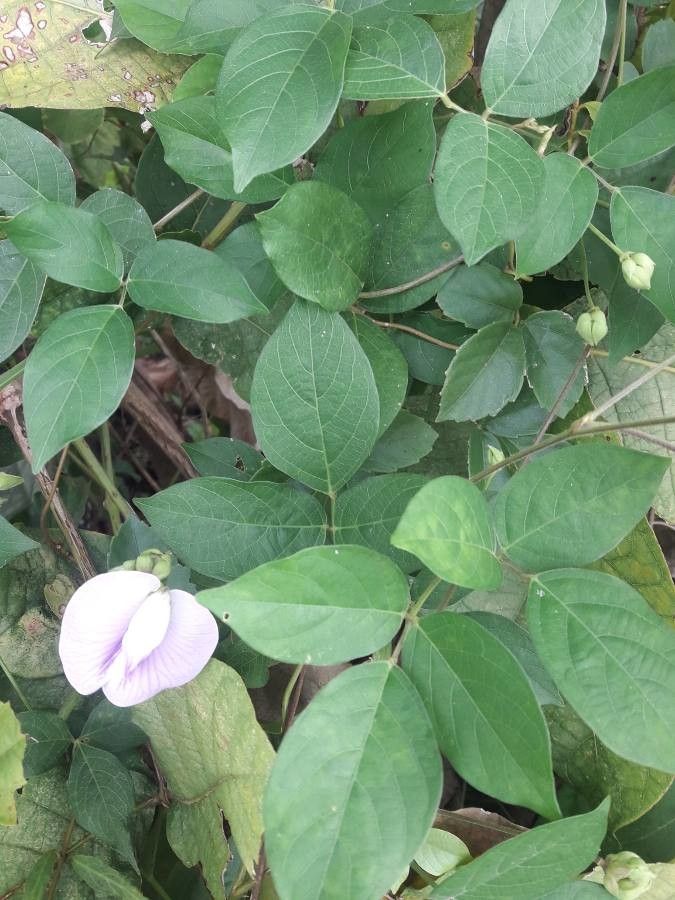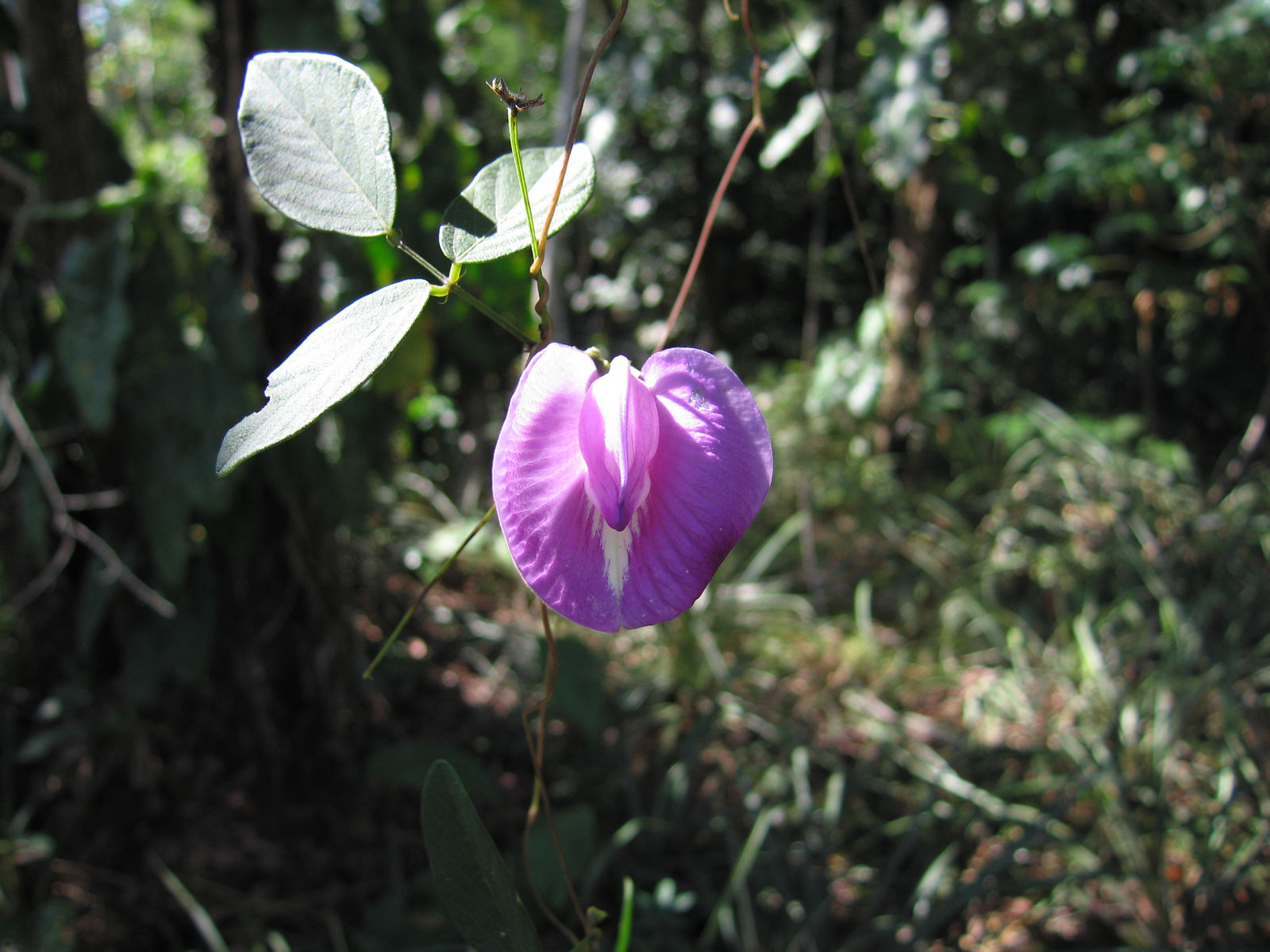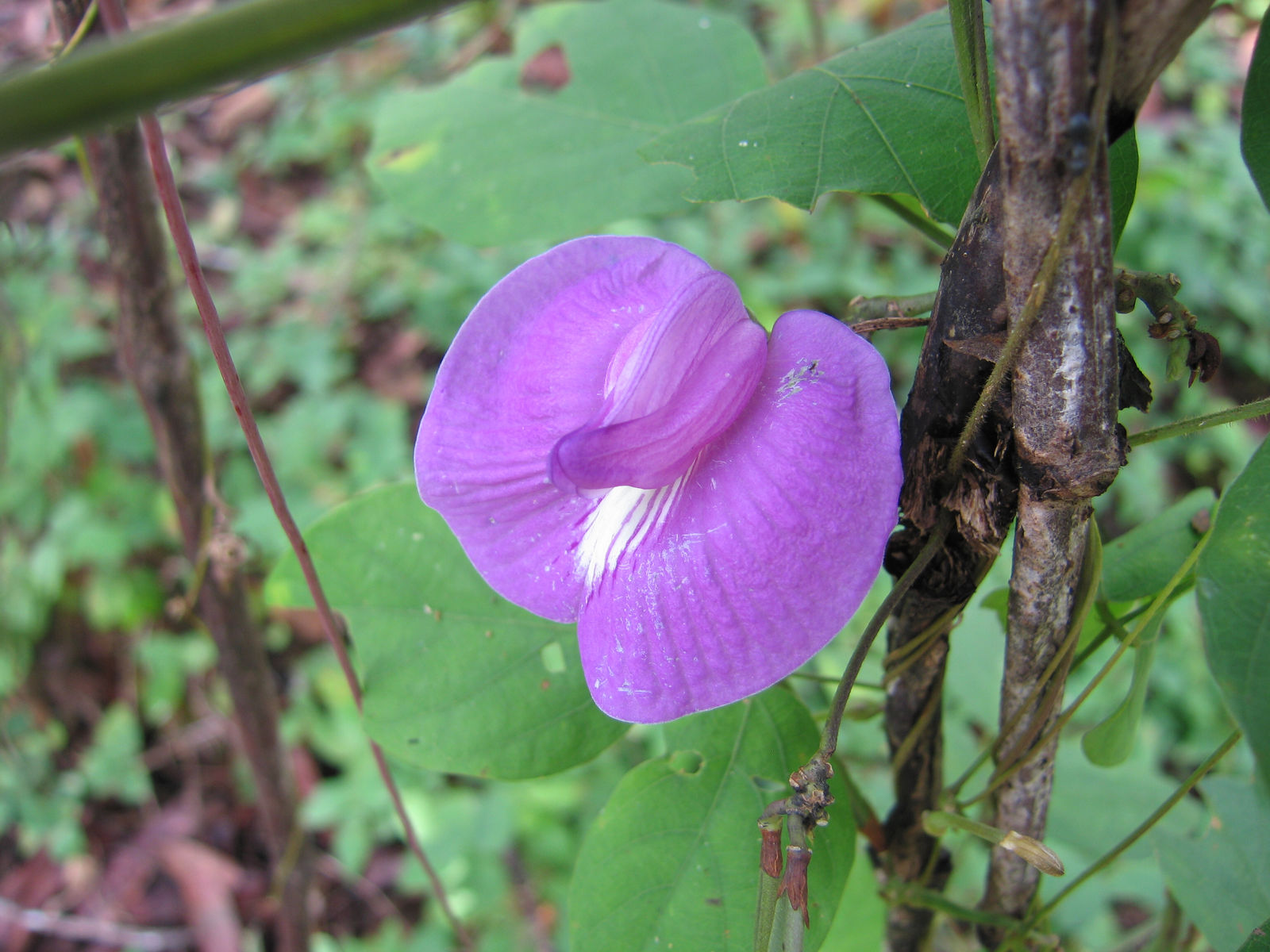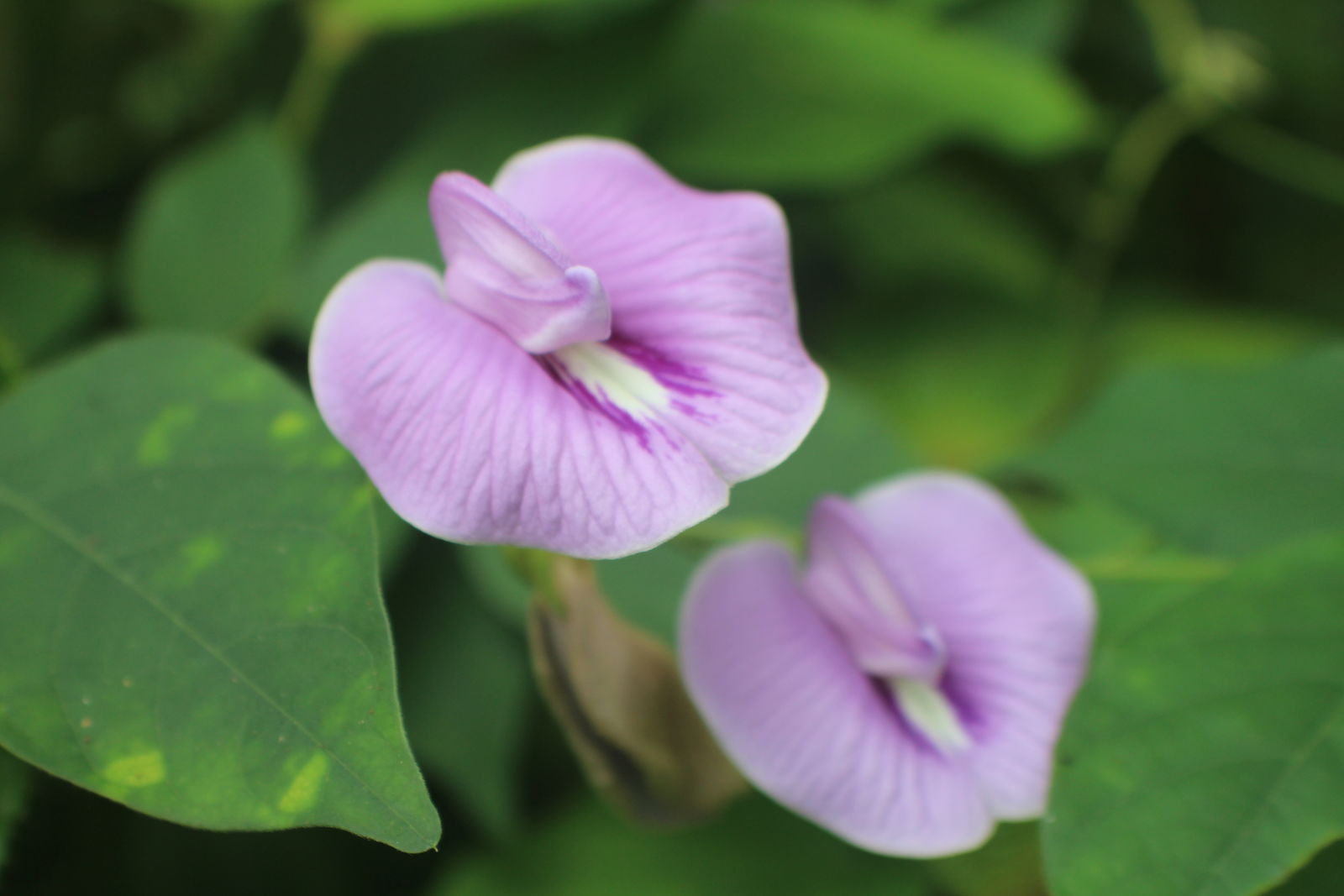Butterfly Pea
centrosema pubescens
Also known as: ["Bluebell Vine","Blue Pea","Asian pigeonwings"]
Overview
A tropical legume known for its vibrant blue flowers and nitrogen-fixing capabilities.
Benefits & Perks
["long-flowering","drought tolerant","wildlife attractant (bees, butterflies, birds)"]
Botanical Classification
| Phylum: | Magnoliophyta |
| Class: | Magnoliopsida |
| Order: | Fabales |
| Family: | Fabaceae |
| Genus: | Centrosema |
| Botanical Name: | Centrosema pubescens |
Plant Characteristics
Basic Information
- Category: Flowers
- Suitable Location: outdoor garden bed in tropical or subtropical regions
- Suitable For:
- Is Weed: No
- Allergenicity: low
Environmental Needs
- Climate: {"temperatureRange":"15–35°C"}
- Hardiness: {"zones":"9–11"}
- Misting: rarely required, only if ambient humidity is very low
- Drainage: Fast-draining to prevent waterlogging.
- Soil Type: Well-draining, loamy soil with organic matter.
Maintenance Level
- Maintenance Level: moderate
- Toughness Level: high
- Pruning Frequency: Annually in late winter or early spring; light pruning after flowering.
- Pruning Intensity: Moderate; remove up to one-third of old growth if needed.
Care Details
Ideal Sunlight Coverage:
Full sun (6–8 hours/day); tolerates partial shade in hot climates.
Sunlight Tolerance Tips:
Acclimate gradually to intense sunlight; protect from harsh afternoon sun in arid regions; adjust indoor placement to mimic natural light cycles.
Care Requirements
Care Difficulty
moderatemoderate
Sunlight
full sun to partial shade
Rotate plant for even growth; use sheer curtains to filter intense light; avoid sudden light changes.
Watering
every 7–10 days during active growth, reduce in winter
Water thoroughly but infrequently; ensure good drainage; avoid wetting foliage.
Soil
well-draining, loamy soil with moderate organic matter
pH: Slightly acidic to neutral (pH 6.0–7.0).
Ensure soil is not compacted; use mulch to retain moisture; test pH annually.
Temperature
Warm temperatures (20–30°C); sensitive to frost; prefers stable conditions above 15°C.
Avoid sudden temperature shifts; protect from frost; ensure good air flow in hot weather.
Fertilizing
every 4–6 weeks during growing season
Apply fertilizer after watering; use slow-release granules for convenience; flush soil occasionally to prevent salt buildup.
Propagation
Methods
Stem cuttings or seed; stem cuttings are faster and more reliable.
Step-by-Step Propagation Guide
- Take 4–6 inch cuttings.
- Remove lower leaves.
- Dip in hormone.
- Plant in medium.
- Maintain humidity.
Best Time: Spring or early summer when growth is active.
Environment
High humidity (70–90%), warm (24–28°C), indirect light.
Medium
Well-draining mix of peat, perlite, and sand.
Hormone
Rooting hormone recommended for faster rooting.
Timeline
Roots in 3–6 weeks; establish in 2–3 months.
Tools Needed
Pruners, rooting hormone, propagation tray, misting bottle.
Quick Tips
Use healthy, non-flowering stems; maintain consistent moisture; provide bottom heat for faster rooting.
Pruning & Repotting
Pruning Guide
Method
Selective thinning of stems; heading back to encourage branching.
Pruning Plan
Remove dead or overgrown stems to encourage bushier growth and better flowering.
Tools
Pruning shears, sterilizing solution, gloves.
Checklist
Sterilize tools; prune dead/damaged stems; make clean cuts; dispose of clippings.
Repotting Guide
Best Season
Spring, before new growth begins.
Pot Size
One size larger pot; ensure it has drainage holes.
Method
Remove plant gently; trim roots if crowded; use fresh soil mix; ensure good drainage.
Suggestions
Repot every 2–3 years or when roots fill the pot; beneficial for growth and flowering.
Checklist
Check root bound status; prepare new pot; use fresh soil; water after repotting.
Advanced Care Tips
Watering Mastery
Watering Checklist
Check soil moisture; water deeply; ensure drainage; avoid wetting leaves.
How to Apply Water Properly
Water at the base of the plant, ensuring moisture reaches the root zone; allow excess water to drain away; water early in the day to minimize evaporation.
Watering Schedule Tips
Water deeply once the top inch of soil is dry; reduce frequency in winter to prevent root rot.
Soil Improvement
Add perlite or sand for drainage; incorporate compost for fertility; use raised beds in heavy soils.
Temperature Stress Management
Signs of Temperature Issues
Wilting, yellowing leaves, stunted growth, or leaf drop in extreme heat or cold.
Cold Stress
Growth cessation, leaf damage, potential death in prolonged frost.
Solution: Provide frost protection (e.g., row covers); move potted plants indoors; avoid planting in frost-prone areas.
Hot Stress
Leaf scorch, wilting, reduced flowering, or dormancy in extreme heat.
Solution: Increase watering, provide shade during peak sun, improve air circulation, mulch to retain soil moisture.
Fertilizing Guide
Fertilizing Checklist
Check fertilizer type; dilute correctly; apply during active growth; avoid winter feeding.
Fertilizing Method
Use balanced liquid fertilizer diluted to half strength every 4–6 weeks during growing season; avoid fertilizing in winter.
Common Problems & Solutions
Toxicity Warning
Cats
Non-toxicCentrosema pubescens is not known to be toxic to cats. There are no reported adverse effects from ingestion or contact with this plant.
⚡ Toxic If:
None
Dogs
Non-toxicCentrosema pubescens is not known to be toxic to dogs. There are no reported adverse effects from ingestion or contact with this plant.
⚡ Toxic If:
None
Humans
Non-toxicCentrosema pubescens is not known to exhibit toxic effects in humans under normal conditions. It is generally considered safe for human contact and consumption.
⚡ Toxic If:
None
Frequently Asked Questions
Q: Is Butterfly Pea edible?
A: Yes, the flowers are used in culinary applications, such as tea and food coloring.
Q: Does it require full sun?
A: Yes, it thrives in full sun but can tolerate partial shade.
Q: Is it suitable for container gardening?
A: It can be grown in containers but requires support for climbing.
Quick Reference
| Family: | Fabaceae |
| Care: | moderate |
| Light: | full sun to partial shade |
| Water: | every 7–10 days during activ |
Get Expert Care Tips
Download the Plantious app for personalized care reminders and plant identification!
Google Play App Store








